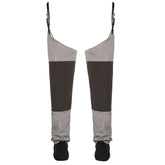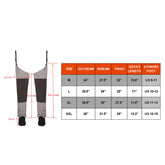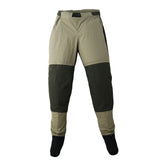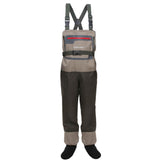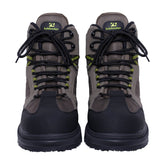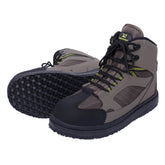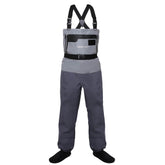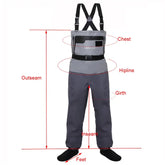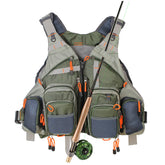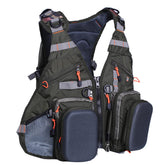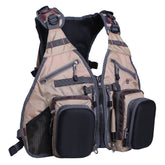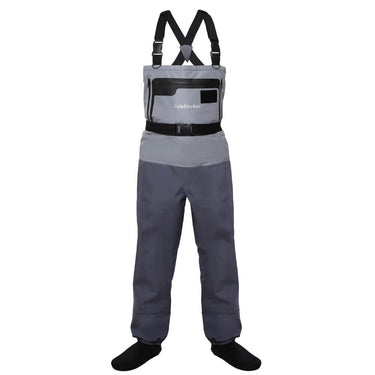4 tips for beginner musky anglers
4 tips for beginner musky anglers
PRACTICE ON PIKE AND PICKEREL
One of the most useful tools that a beginner can use when it comes to learning how to fish for muskies is fly fishing for the pike and pickerel. These two species are known to be more aggressive than the other ones, and this allows them to practice casting and retrieving large flies. This also provides them with an opportunity to develop their skills at dealing with the lure in close quarters.
Being able to fish for pickerel has given me the opportunity to learn from my mistakes and improve my skills on the water. Although this isn’t the case for everyone, I believe that it’s important for every person to have confidence in their abilities when it comes to fishing for muskies.
During my time fishing for pickerel, I had the opportunity to make many mistakes when it came to casting and hookset techniques. One of the most common mistakes that I made was reacting violently to an aggressive fish that appeared beside my boat.
During one of my trips, I had the opportunity to catch a couple of boat side eats while fishing. This provided me with the necessary skills to avoid getting hit by a sudden and powerful strike while casting. One of the most common mistakes that a beginner can make is to use the rod tip to set the hook. This method can easily lead to an unpleasant surprise.
After experiencing numerous instances of success with local pickerel, my nerves started to settle down. I started to limit my enthusiasm and focus on keeping the fly moving. Although I still get excited when a muskie chases my flies, I now know that I can control my emotions without overacting. This is the most common mistake that new anglers make.
YOU DON’T NEED AN 11-WEIGHT FLY ROD
Most of the time, I use lighter rods when it comes to catching muskies. I have caught and played a few of these fish using these smaller rods in the 7-8 weight class. During the early season, I accidentally caught and landed several large muskies while fishing for smallmouth bass using a large 3-5 inch streamer.
Late season muskies in my home waters typically go on a feeding binge as they try to gain weight before winter sets in. This provides an opportunity for anglers to attract these fish using larger flies. For this reason, I prefer using heavier 11-weight rods.
Although an 11-weight rod is a bonus when it comes to catching large fish, I do not believe that it’s necessary for me to have a lot of rod power to catch the average size muskie in my home waters. When compared to the quality smallmouth bass that are commonly found in my area, 30- to 36-inch muskies offer a similar fight.
During the spring and summer, I often use smaller flies instead of larger ones to attract muskies. This is the reason why I usually only bring 8- or 7-pound rods during these times. Compared to the heavier 11-pound aluminum broomstick rods that I use in the fall, the smaller flies that I use during these times are less likely to cause damage to my body.
During the fall, I start using patterns that resemble small chickens to attract muskies. This method has helped me land several large fish.
When the late fall season begins, I start using heavier 11-weight rods to carry and pull large patterns to the target. This is the reason why I only use these clubs during this period. Casting large muskie patterns using an 11-weight rod can be very labor-intensive.
KNOW WHERE LATE SEASON MUSKY HOLD
According to some anglers, about 80% of trout are in 20% of the water. With regard to muskies, I believe that around 95 percent of these apex predators are in 5% of the water in my home waters during the late season. This is because they follow all other fish to the deeper and slower sections of the river.
One of the most important factors that you should consider when it comes to catching muskies during the late season is the depth and slowest sections of the river. This will allow you to cover a lot of distance and avoid wasting time fishing between the pools.
Although it can be challenging to catch large muskies in large bodies of water, these fish need food and shelter. To attract them, you should locate areas that are well-connected to deep pools and have submerged timber. You might initially think that you're looking for a needle in a haystack, but it will take some time to locate these areas. Also, be sure to check out the wintering spots of baitfish.
One of the easiest ways to become a successful muskie fisherman is by using a fish finder. This will allow you to spend a day mapping the water and identifying the ideal locations for fishing. Besides knowing where to fish, you should also be knowledgeable about where not to fish.
Since I've learned how to target prime muskie areas, I've been able to avoid wasting time casting to areas that are not ideal for late season success. One of the most important factors that you should consider when it comes to catching large muskies during the late season is the depth and slowest sections of the river.
EMBRACE SUFFERING
Successful muskie fishermen know how to endure losses and fishless days. The sport of fishing is not like instant gratification. It requires a lot of work and discipline to catch large muskies. There are also rarely shortcuts to success.
One of the most important factors that you should consider when it comes to catching large muskies during the late season is the depth and slowest sections of the river. Hiring a professional guide can sometimes help you locate the ideal areas and attract the local population. However, getting the locals to chase your fly can be a different matter.
It can be very frustrating to not see a single fish after several casts. This is why I believe that most successful muskie fishermen are built differently than the average recreational fly fisher. They anticipate and treat their fishing like it's their last day.
The sport of muskie fishing is a war of attrition. It involves long periods of investment and often little success. The body is constantly beating from the exertion, and the mental state of the fisherman is on high alert as they try to land a big muskie.
The ultimate reward is when a great challenge is met. I believe that the best experience is when a fisherman connects with a muskie on a fly rod. This hobby has become my current obsession.
Article refer:
1.Basic Fly Casting Techniques -Two Stroke Casting
2.Various Types of Fly Fishing Haul Casting Techniques
3.Some Roll Casting Technique For Beginner
4 tips for beginner musky anglers
5.Favorite Fly Patterns for Lakes
6.Can You Fly Fish in Windy Conditions? (7 Tips to Cast in Wind)
7.What equipment is needed for fly fishing for sockeye salmon?
8.How to prepare fly fishing gear for striped bass?
9.The Five Stages of Fly Fishing
10.Flying gear: six fishermen necessities
